 W
WThe National Audubon Society (Audubon) is an American non-profit environmental organization dedicated to conservation of birds and their habitat. Located in the United States and incorporated in 1905, Audubon is one of the oldest of such organizations in the world and uses science, education and grassroots advocacy to advance its conservation mission. There are completely independent Audubon Societies in the United States, which were founded several years earlier, named after states of the USA, for example, Massachusetts Audubon Society and Connecticut Audubon Society.
 W
WAudubon is the flagship journal of the National Audubon Society. It is profusely illustrated and focuses on subjects related to nature, with a special emphasis on birds. New issues are published bi-monthly for society members. An active blog called The Perch produces daily updates on issues also. In 2011, Audubon Magazine received an Utne Reader Independent Press Award for Best Environment Coverage.
 W
WThe Audubon Center of the North Woods, on Grindstone Lake near Sandstone, Minnesota, is a non-profit residential environmental learning center, wildlife rehabilitation facility, and conference/retreat facility.
 W
WAudubon Sharon, which consists of the Sharon Audubon Center and the Emily Winthrop Miles Wildlife Sanctuary, is a wildlife sanctuary of the National Audubon Society in Sharon, Connecticut. The 1,147 acres (464 ha) of the Sharon Audubon Center property is primarily forest land with two ponds with 11 miles (18 km) of trails for visitors to use. Its facilities include a raptor aviary, an herb garden, a garden to attract bird and butterflies, a sugarhouse, a memorial room to Hal Borland, a small museum and store. Sharon Audubon Center is located at 325 Cornwall Bridge Road.
 W
WChatfield State Park is a state park located in Douglas and Jefferson counties of Colorado, United States. The park centers on Chatfield Reservoir, a 1,423 acre surface area lake fed by the South Platte River and two other creeks, including Plum Creek.
 W
WConstitution Marsh is a 270-acre (110 ha) fresh water and brackish tidal marsh located between Constitution Island and the eastern shores of the Hudson River in Garrison, New York. Together with 80 acres (32 ha) of bordering woodlands, it forms the National Audubon Society's Constitution Marsh Audubon Center and Wildlife Sanctuary. Part of Hudson Highlands State Park, it is one of five major tidal marshes along the Hudson River. Constitution Marsh is an Audubon Important Bird Area, and has been listed as a New York State Bird Conservation Area since the early 2000s. It is also recognized by the New York State Department of State as both a Significant Coastal Fish and Wildlife Habitat and a Scenic Area of Statewide Significance.
 W
WCorkscrew Swamp Sanctuary is a National Audubon Society sanctuary located in southwest Florida, north of Naples, Florida and east of Bonita Springs, in the United States. The sanctuary was established to protect one of the largest remaining stands of bald cypress and pond cypress in North America from extensive logging that was ongoing throughout the 1940s and 1950s.
 W
WEastern Egg Rock Island is an island in the Town of St. George in Knox County in the U.S. state of Maine. It is owned by the Maine Department of Inland Fisheries and Wildlife (MDIFW), and it is located off the southern Atlantic Coast of the state. Project Puffin, a restoration effort by the Audubon Society, is implemented on Eastern Egg Rock through a contract with the MDIFW.
 W
WThe Francis Beidler Forest is an Audubon wildlife sanctuary in Four Holes Swamp, a blackwater creek system in South Carolina, United States. It consists of over 16,000 acres (65 km²) of mainly bald cypress and tupelo gum hardwood forest and swamp with approximately 1,800 acres (7 km2) of old-growth forest. It is the largest virgin stand of these trees in the world, with some trees over 1,000 years old. It is a favorite haunt of birdwatchers and is used for biological research projects by area schools.
 W
WThe Hawaii Audubon Society is a birding and bird conservation organisation in the American state of Hawaii. It was founded in 1939 by Charles Dunn, is based in Honolulu and is affiliated with the National Audubon Society. It has over 1,500 members throughout the state and produces a regular newsletter, ‘Elepaio.
 W
WMill Grove is a historic house and estate on Pawlings Road in Audubon, Pennsylvania. Built in the 1760s, it is notable as the first home in America of painter and naturalist John James Audubon (1785-1851) for which the community is named. The 130-acre (53 ha) estate is now maintained as a museum and wildlife sanctuary by Montgomery County, and was designated a National Historic Landmark in 1989. The house serves as the educational center of the Pennsylvania chapter of the National Audubon Society, and is known as John James Audubon Center at Mill Grove.
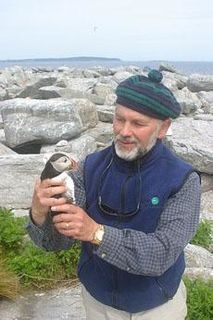 W
WProject Puffin is an effort initiated by Dr. Stephen W. Kress of the National Audubon Society to learn how to restore puffins to historic nesting islands in the Gulf of Maine. It was started in 1973 when puffins were nesting in only two locations in Maine — Matinicus Rock and Machias Seal Island. The project began with an attempt to restore puffins to Eastern Egg Rock Island in Muscongus Bay, about 6 miles (9.7 km) away from Pemaquid Point. The restoration efforts are based on the fact that young puffins usually return to breed on the same island where they hatched.
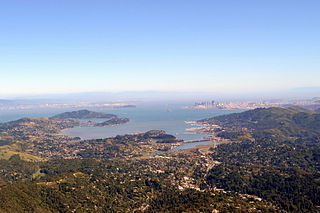 W
WRichardson Bay is a shallow, ecologically rich arm of San Francisco Bay, managed under a Joint Powers Agency of four northern California cities. The 911-acre (369 ha) Richardson Bay Sanctuary was acquired in the early 1960s by the National Audubon Society. The bay was named for William A. Richardson, early 19th century sea captain and builder in San Francisco.
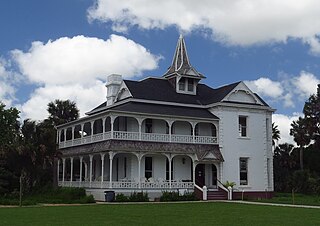 W
WThe Sabal Palm Sanctuary is a 557-acre (225-hectare) nature reserve and bird sanctuary located in the delta of the Rio Grande Valley in Cameron County near Brownsville, Texas. It is noted for being one of the last locations in the Rio Grande Valley with a profuse grove of sabal palms, an edible-heart-bearing palm much prized by pre-Hispanic inhabitants and noted by early explorers. As a relatively habitat-rich remnant of this Valley, it is a prized birdwatching and butterfly watching location for persons interested in the ecology of the Valley and adjacent states of northern Mexico.
 W
WScioto Audubon Metro Park is a public park and nature preserve in Columbus, Ohio. The park is managed by the Columbus and Franklin County Metro Parks and is part of the Scioto Mile network of parks and trails around Downtown Columbus. The park features numerous trails, wetlands, rock climbing, volleyball and bocce courts, and numerous other amenities. At the western edge is the Grange Insurance Audubon Center, considered the first nature center built in close proximity to a downtown area.
 W
WSpring Creek Prairie Audubon Center is an 850-acre (340 ha) tallgrass prairie nature preserve located southwest of Lincoln, Nebraska near Denton. Established in 1998, it is home to 222 bird species, 30 mammal species, 53 butterfly species, 35, dragonfly/damselfly species, and over 370 plants. Roughly three miles of walking trails run through the prairie. 19th-century wagon ruts from the Nebraska City-Fort Kearny Cutoff to the Oregon Trail can be observed.
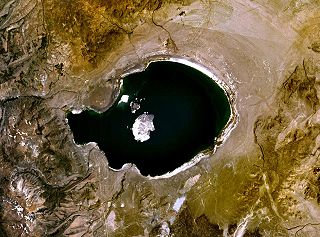 W
WNational Audubon Society v. Superior Court was a key case in California highlighting the conflict between the public trust doctrine and appropriative water rights. The Public Trust Doctrine is based on the principle that certain resources are too valuable to be privately owned and must remain available for public use. In National Audubon Society v. Superior Court, the court held that the public trust doctrine restricts the amount of water that can be withdrawn from navigable waterways. The basis for the Public Trust Doctrine goes back to Roman law. Under Roman law, the air, the rivers, the sea and the seashore were incapable of private ownership; they were dedicated to the use of the public. In essence, the public trust doctrine establishes the role of the state as having trustee environmental duties owed to the public that are subsequently enforceable by the public. There is judicial recognition of this, dictating that certain rights of the public are key to individual common law rights. Judicial recognition of the public trust doctrine has been established for tidelands and non-navigable waterways, submerged land and the waters above them, and preservation of a public interest.
 W
WThe Trinity River Audubon Center is a nature center and the central structure in the Great Trinity Forest, a large urban open space park in Southeast Dallas, Texas.
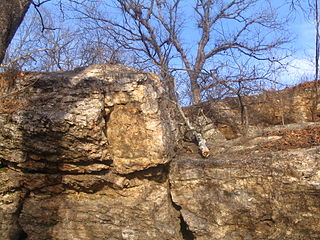 W
WWildcat Glades Conservation and Audubon Center was an Audubon owned and operated nature center located in a protected area in Joplin, Missouri. It was an Audubon sanctioned environmental education and conservation facility that protected the last remaining globally unique chert glades, as well as other natural resources of the biologically diverse Spring River watershed. Located at the confluence of Silver and Shoal Creeks, the center, now operated by the State of Missouri, showcases plants and animals found on the chert glades and surrounding aquatic and woodland savanna habitats. Chert glades, named after the bedrock on which they have formed, host a unique assemblage of plants and animals that may be found elsewhere in the world, but not typically found together as they are at Wildcat Park. A variety of plants and animals found in surrounding caves, prairie-savanna, riparian corridor, and oak/hickory woodlands converge here for an unusual suite of biological diversity that was being documented, monitored, and protected through education and outreach to the surrounding community and region. The center was a result of a nearly $6 million partnership project of the National Audubon Society, City of Joplin, and Missouri Department of Conservation. The center was one of two Audubon Centers managed by Audubon Missouri, a state office the National Audubon Society. The Audubon Center at Riverlands is located in north St. Louis on the Mississippi river, near its confluence with the Missouri river.